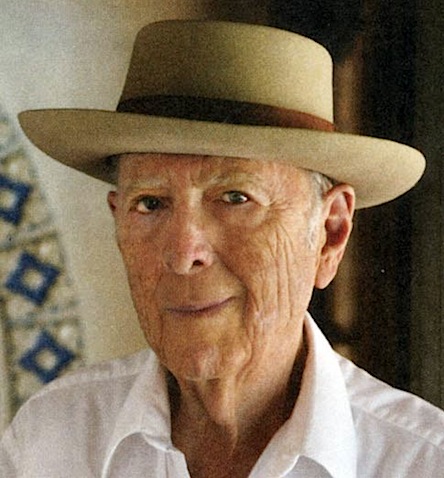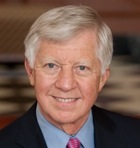Smart Leadership

“Never tell people how to do things. Tell them what to do and they will surprise you with their ingenuity.”
–General George S. Patton (American General, 1885-1945)
Thoughtful Leadership

“A leader can’t dash ahead around the bend out of sight.”
–Herman Wouk (American Pulitzer Prize-winning Writer, 1915-)

Wise Words About Leadership

I was recently talking to someone about the difference between managers and leaders. Wherever you find yourself with a group of people who have to get something done, you can usually spot the leaders. They don’t necessarily have lots of stripes on their arms, distinctive epaulettes or shiny nameplates. For more than two centuries it has been known that around 5% of the population has a natural ability to lead. But more importantly others give them the permission to take charge. That 5% also has a number of other interesting characteristics that we shall talk about in other posts.
But there is more to leadership than natural ability.
Here are some wise words from someone who know more than most about successful leadership:
“Is leadership inherent or trainable? Both.
You are born with characteristics that reside deep inside you: drive, an ability to influence and motivate, perseverance. But you have to develop those qualities through actual leadership experiences.
A key quality is adaptability–facing unexpected obstacles, falling short of goals, reading the context, and changing your approach.
Absent that, leaders will continue to repeat mistakes and will not grow and develop. That leads me to the essence of the question “Why is it so hard to lead yourself?”
The answer, in my experience, lies in the differences between your idealized self–how you see yourself and how you want to be seen–and your real self. The key to growing as a leader is to narrow that gap by developing a deep self-awareness that comes from straight feedback and honest exploration of yourself, followed by a concerted effort to make changes.”
–William W. George (American Professor of Management Practice at Harvard Business School and Former CEO of Medtronic, Inc., 1942-) [Quoted in Fast Company, April 2007]
Clarity of Communication
One of the major reasons for the failure of relationships or of businesses is a failure to communicate clearly. There are also powerful reasons for thinking that much ill health is rooted in “blockages:” inadequate communication between your body, your mind, your emotions, subtle systems and spirituality.
Any communication consists of ten essential components:
- The integrity and mental state of the sender
- The intent of the sender
- The expectation of the sender
- The information
- The medium
- The context
- The receiver
- The mental state of the receiver
- The reaction or response of the receiver
- The meta-text and meta-communication of the exchange
Naturally, in a healthy communication, everyone involved takes turns being the sender and the receiver, and this interaction between you creates the overall message. I must be very clear that I’m not just talking about verbal communication, but also physical and intimate interactions, business and family discourses.
I’d also like to take the whole notion of communication a step further: meaningful communication needs for us to be consciously aware of the interaction, and we should see it not just as an exchange of information, but of energy. A charismatic individual may communicate a lot more than mere words and his or her impact may last long after the words have been forgotten. On the other hand, there is actually a technical term – phatic communion – for empty language that is purely used for social lubrication: “How are you?” “You’re welcome,” “Have a nice day.”
It really is important to be aware of all of these components of communication. A problem in any one of them can make a mess of any attempt for people to connect. Too often I see people think only of the sender, the message and the recipient, without realizing that it is the other aspects of communication that are the keys to success or failure. This is often very important in therapy: people may ruminate on something said to them, when they should be considering the context of whatever was said.
Meta-text and meta-communication refer to the whole spectrum of other components of our interactions that stretch beyond the message itself. These include the types of language that we use as well as prosodic cues. And if people are in close proximity, body language and gesture. You may well know that it is possible to tell a great deal about someone’s intentions by studying changes in the tone of their facial muscles, changes in the color of their skin and the directions I which they move their eyes when speaking. How we use certain words to fill in our communication can be as important as the main body of a communication. Something that we do all the time is to try to understand the underlying meaning or meta-text, that is often quite different form the actual words being spoken.
Whether dealing with an individual in therapy or a business that wants to perform better, there is a series of critical questions that will uncover communication problems:
- Do you have any communication problems?
- Who is responsible for it?
- Is there a disconnection between the mental state of any message sender and the message itself?
- Does the sender have a clear purpose in communicating?
- Are people able to understand the sender? (T.E. Lawrence (of Arabia fame) was said to have one of the largest vocabularies at the University of Oxford. So large that many people didn’t have a clue what he was talking about!)
- Is information being communicated appropriately?
- Is the environment conducive to communication?
- What is interfering with communication?
- How long has this been a problem?
- Why has the problem not been solved?
If there is a communication problem, consider starting from scratch:
- Any communication contains information and energy: are they both clear and pure?
- Is there congruence between what is being communicated and the intent of the communicator?
- Is there a culture of integrity in communications?
- Are people striving for the greater good or personal aggrandizement?
- What people, policies or procedures are interfering with communication?
- How are communications becoming degraded?
- What and who’s emotions are interfering with the informatyion and the energy of any communications?
- What might lead to the misunderstanding of a message?
- What systems are in place to ensure that communications are being received and understood correctly?
- What system of questioning is in place?
Once we understand each of the phases of communication, and that it is a dynamic exchange of energy and not just information transfer. And that ANY message or communication is subject to degradation, and that there are ways to check for and correct it, you are well on your way to abolishing many of the problems that can wreck relationships, capsize companies and ruin a therapeutic alliance.
“Once a human being has arrived on this earth, communication is the largest single factor determining what kinds of relationships he makes with others and what happens to him in the world about him.”
— Virginia Satir (American Family Therapist, 1916-1988)
“Skill in the art of communication is crucial to a leader’s success. He can accomplish nothing unless he can communicate effectively.”
— Norman Allen (American Playwright, Recipient of a Charles MacArthur Award for Outstanding New Play)
“A world community can exist only with world communication, which means something more than extensive shortwave facilities scattered about the globe. It means common understanding, a common tradition, common ideas, and common ideals.”
–Robert M. Hutchins (American Educator, and, from 1929-1945, President of the University of Chicago, 1899-1977)
Gender, Culture and Communication
Regular readers will know that I’m very interested in gender differences. More and more evidence is confirming what most of us have always known: men and women tend to think and behave differently. Some of the differences are clearly neurological and some social. It is sometimes difficult to sort out which is more important: some research findings on gender differences have produced mixed results because of some of the assumptions of male investigators!
But notice that I emphasize the word “tend” to think differently. We are always dealing with statistical differences. My Y-chromosome should enable me to navigate from A to B without difficulty. In fact, I am seriously directionally challenged: I should probably have a GPS system with me when I go down to the shops!
I have spoken about my admiration for the work of Deborah Tannen, and I have also written about Christina Robb’s marvelous book, in which she charts the development of new insights into gender differences in psychology.
This weekend I was at the annual meeting of the National Speakers Association in Orlando, and I learned something very interesting that fits in with all of our previous discussions. I learned it from one of the speakers, named Julia Hubbel. I already knew that women tend to be more relational in their interactions and men are more transactional. Most women tend to spend a lot more time on the maintenance and development of relationships and most men are more interested in the bottom line: What is the solution? What’s the deal going to be? What I did not know is that there is some data to indicate that non-White males tend also to emphasize relationships over transaction. As soon as I heard that, I was sure that it was right: I have had a lot of dealings with people from the Indian subcontinent, and most would consider it very rude to get straight down to business before we had taken tea or eaten something while discussing family and other personal matters. Julia teaches networking skills that integrate gender and ethnic considerations.
As she was explaining her insights and methods, I was reminded of the work of the anthropologist and cross-cultural researcher Edward T. Hall, who wrote a series of excellent books on cultural factors and thought.
Gender and cultural differences in communication are of such importance that I plan to return to the topic in the near future. In the meantime, you might be interested in a book by Richard Nisbett, entitled The Geography of Thought: How Asians and Westerners Think Differently and Why. After multiple trips to Japan, during which I learned a lot about cultural differences, I gave a copy to a friend who is a Canadian in a senior management position in the Japanese affiliate of a US-based company. He told me that he was astonished by the accuracy of the insights.
Some of the political misunderstandings that you see on the news every morning are often a consequence of different thinking styles. Learning how men and women and people in different cultures think and operate is not just interesting.
It is essential.
“Skill in the art of communication is crucial to a leader’s success. He can accomplish nothing unless he can communicate effectively.”
— Norman Allen (American Playwright, Recipient of a Charles MacArthur Award for Outstanding New Play)
Technorati tags: Communication Gender differences Deborah Tannen Cross-cultural communication
Presence and Charisma
I was reading a heart-warming story reported by the BBC of a unique case of a young woman who had a heart transplant at the age of two, and when, ten years later, her adolescent body began to reject the heart, the transplant was removed, and her original heart, which had been resting for ten years, was able to take over. A medical first, but that was not what attracted my attention. Neither was it the lymphoma that she developed several years ago, perhaps because of the original illness that damaged her heart, or perhaps because of the anti-rejection medicines that she has had to take all these years.
It was instead the smiling face of Professor Sir Magdi Yacoub (I just love the pictures of him here.) who did the original operation and who consulted on this new operation. He recently turned 70 and no longer operates himself. I cast my mind back almost 25 years, when I was working at the National Heart Hospital in London and first met him. There are two things that I remember about him. The first is that he was the person who allowed me to show the successful use of acupuncture to treat people who had gone through open-heart surgery, and still had pain in their chests. And the second is the reason for today’s item: Magdi had the most extraordinary personal “Presence.” When he walked in a room, everyone would notice him. Most had no idea who he was, or his extraordinary achievements; they were just drawn to him.
I have met many people who have this “presence” or “aura.” In the Eastern world it is often thought of as another manifestation of “Qi.” Closely related to “presence” is charisma: a compelling attractiveness or charm that can inspire devotion in others. In the ancient world charisma was thought to be a divine power or talent, and the word comes from the Greek word kharis meaning “grace” or “favor.” There is a small scientific literature on this phenomenon of charisma, which often flows from having a strong presence. Some of the research is summarized here.
There are clearly many types of charisma: Political, sports, performance, business, spiritual, literary. scientific and so on. The only two people whom I’ve met who knew Einstein told me that people would usually all stand up when he entered the room. Charisma is more than just a personal characteristic; it can also be conceptualized as the way in which certain groups interact with each other. There is a fascinating book entitled Charisma and Social Structure by Raymond Trevor Bradley, that has a fascinating discussion of the transformative and transcendent power of charisma. It must also not be forgotten that there are those who have used charisma for evil ends: three of the most wicked people of the last century were also possessed of extraordinary personal charisma.
Clearly some people have presence and charisma. The question is whether theses characteristics can also be developed. The answer is yes, they can be. Presence is created by an overall impression constituted of posture, eye contact, stillness, silence, self-confidence, competence and serenity. People with a strong presence are often a little mysterious, in the sense that they tend not to reveal much about themselves or their accomplishments. I have also felt if very strongly in people who have worked to develop the subtle systems of their bodies. One of the most potent examples was a Korean Ki-Master who spoke not a word of English, but whose presence could be felt the moment he entered a packed room. Work on your subtle systems will likely cause you to be more still and serene and to have a better posture and that’s a great start.
There are a number of things that you can do to improve your own charisma:
- Create a strong first impression by developing your presence
- Develop a good impression when you speak
- Be a good active empathic listener who connects with other people and asks pertinent questions
- Be supportive of other people and their aspirations
- Be persuasive
- Be resilient and adaptable
- Expand your vision of what is possible
- Practice thinking creatively
- Use humor
- Be committed and courageous
- Initiate persistent action
- Instill hope in the people around you
Technorati tags: Sir Magdi Yacoub, Charisma, presence, empathy, acupuncture







